Nos preguntáis a menudo por los procesos para restaurar una pieza y aunque cada caso es diferente y necesita métodos y dedicación únicos, les traeremos en nuestros próximos posts algunos ejemplos de lo que hemos hecho.
We are often asked about the restoration process. It is difficult to describe it in general terms because every project is unique and will involve specific methods and techniques, but over the coming weeks, we will share a few examples of restoration work that we have done to illustrate the process.

Alacena antes de la intervención
Esta semana comenzamos con Alacena. Con el nombre ya pensaréis que es suficiente pero aún podemos contaros un poco más sobre ella.
Las alacenas se popularizaron en España en los años 50, también con el nombre de fresqueras. Deben su diseño a las metálicas usadas en Estados Unidos justo antes de la llegada de los refrigeradores en la década de los 20’s y 30’s. Era aquella la época en que un hombre con muy buenos brazos traía a domicilio grandes bloques de hielo, los cuales eran almacenados en las llamadas «ice box».
Antique Iceland Icebox via Etsy. Iceman by the Minneapolis Star via Michael Donovan
En España se hicieron en principio en madera con recubrimiento en masonita (un tipo de aglomerado de maderas). Más adelante, en los años 60’s y 70’s, se comenzaron a fabricar en fórmica, materiales resinosos, conglomerados y plastificados.
This week we start with Alacena, a kitchen cabinet unit. We will explain to you where it came from and show you some of the stages of its restoration.
This type of units were very popular in Spain in the 50’s, sometimes going by the name of «fresqueras» (won’t attempt to translate that!). They became popular after the success of similar ones in america, often made of metal and designed to keep ice in the lower drawers. The famous «Ice Boxes» from the 20’s and 30’s where you would put your food with blocks of ice delivered by a a very strong guy with big arms.
In Spain they were made first from wood with masonite (a type of wood agglomerate). Later, in the 60’s and 70’s they started to manufacture them in formica, resin materials, agglomerated and laminated.

Su otro nombre, “fresqueras”, viene de uno de los usos habituales que se le daba en las casas antiguamente. Se instalaban en la sombra para que les diera “el fresco” y así conservar los alimentos. El otro uso de estas alacenas era guardar la vajilla o las cosas de la mesa, tal y como hacemos ahora.
La alacena que decidimos intervenir es una pieza original de final de la década de los 50’s. La estructura es de madera de pino y las paredes y puertas están recubiertas con masonite y laterales redondeados.
Siendo fiel al diseño de alacenas de su época, este mueble tiene herrajes y pomos industriales, en este caso de latón.
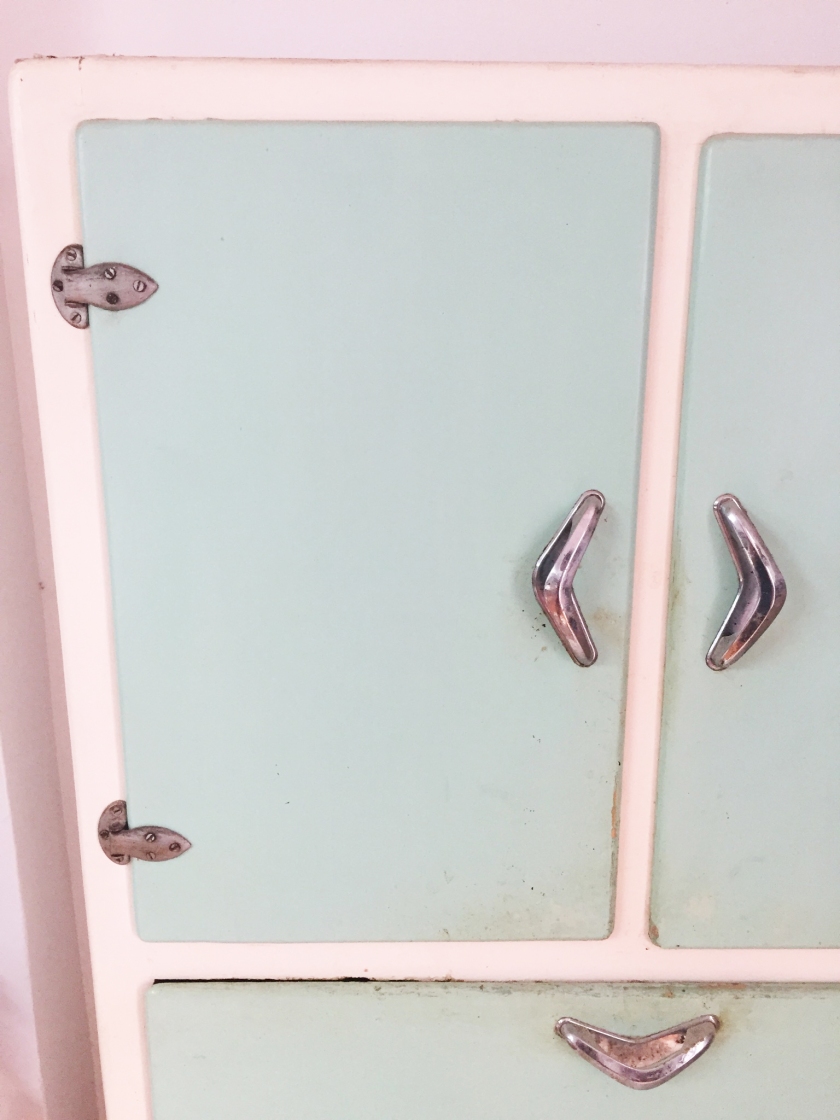
The name «fresquera» comes from one of the uses given to these cabinets. «Fresco» means fresh. The units were placed in the shadow to keep the food… well, just that… fresh. But some were already being used for what they are being used today: keeping cutlery, plates and glasses.
Our kitchen unit is an original piece from the end of the 50’s with a pine wood structure and with doors and sides covered with masonite. The design is rounded.
True to its design, the cabinet has industrial looking fittings and knobs. These ones were made from metal.
Nuestra Alacena acompañó a una abuela por más de 50 años en la cocina. La ventaja es que estuvo protegida de los elementos, no tenía manchas de humedad ni carcoma y la estructura estaba muy bien conservada. La desventaja, la grasa.
Our Alacena kept company to a grandma for more than 50 years in her kitchen. The good thing is that it was always protected from the elements. It didn’t show signs of humidity or woodworms and the structure was well preserved. The bad thing, the grease…. Oh my God the Grease!!!
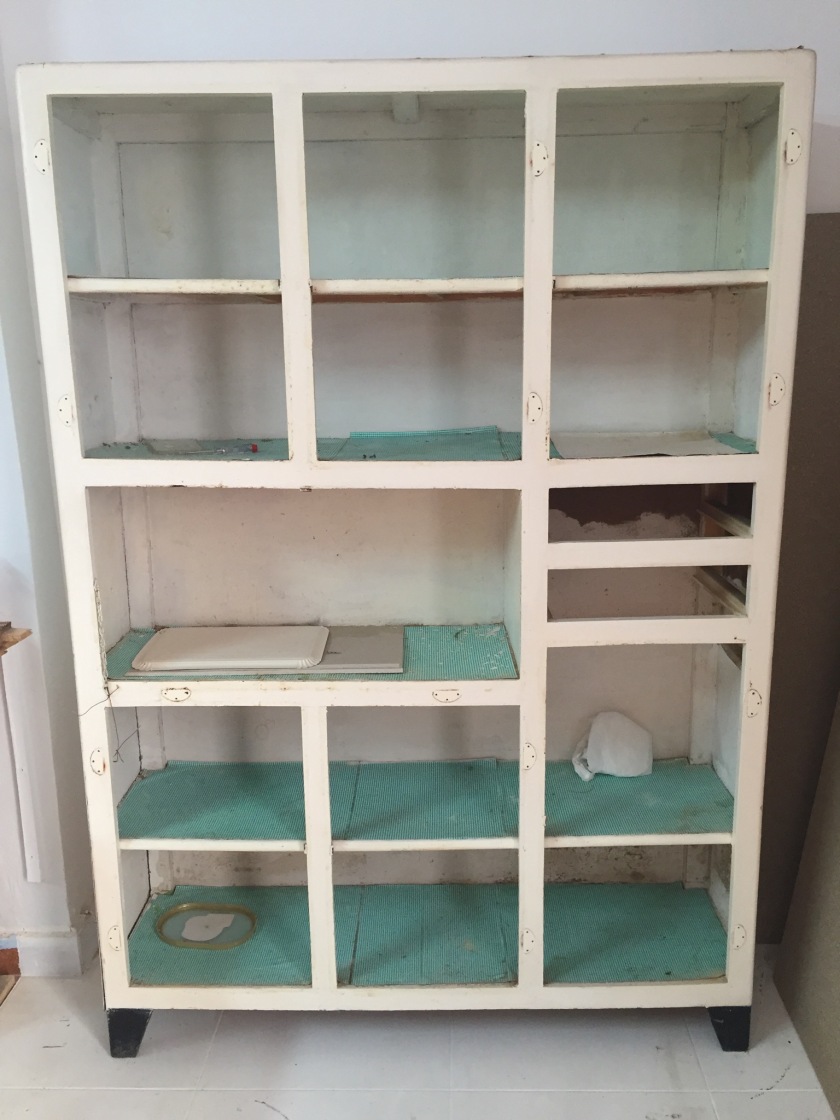
La grasa se fue acumulando poco a poco en el aglomerado, que siendo un material poroso, absorbía lo que le iba cayendo. Al intervenir la alacena decidimos conservar al máximo la estructura pero fue inevitable cambiar las estanterías por material nuevo. Los laterales externos los restauramos y conservamos.
The shelves had accumulated so much grease due to the porosity of the material that we had to replace them all. We kept however all the structure and the sides.
We started by taking the whole unit apart, gave all the wooden pieces, the nails and the screws a good general cleaning.
Desmontado el mueble, hicimos una limpieza general de la estructura así como de los clavos y los tornillos.

Montamos de nuevo la estantería con todos los materiales limpios o reemplazados, a excepción de una de las puertas que debido a la grasa no se podía recuperar. Decidimos entonces, no sólo para evitar introducir un material diferente en el frente, sino también para dar un poco de aire al diseño, quitar la puerta y dejar el espacio vacío.
We then put it all back together using both the restored and the new materials together. Only we had to scrap one of the doors that also had been too damaged by the grease. We did not feel that replacing it would look good, because the difference in material would show. So, rather than replacing the door, we decided to leave it without. For the reason just mentioned, but also because it actually helped to lighten the design.
Usamos pintura acrílica para asemejar la usada originalmente, mezclando el color exacto de la pieza original: azul y beige. Añadimos amarillos en los cajones para que visualmente la estantería se viera menos pesada y voluminosa.
To recreate the same painting effect, we chose acrylic painting mixed with the exact blue and beige colours from the original piece. We added yellow to the drawers to continue with a lighter look.
Después de limpiar los herrajes y los pomos de las puertas, la marca de 50 años de óxido era aún perceptible por lo que optamos por cromar cada pieza y así rescatarlas. ¡Quedaron como nuevas!
After cleaning up the fittings and knobs from the doors, the 50 years of use and rust were still visible so we decided to chrome every piece and make them new again!
We finally varnished and installed the last pieces…. !
We’ve just summarised in a few lines a 2 months process! We are very proud of what we have done and we now hope that it can be left alone for another 50 years of daily use.
It is prepared to survive water, light, heat… hurricanes, tsunamis… the lot.

Barnizada la estantería e instaladas estas últimas piezas, acabamos un proceso de dos meses en el que nos propusimos dejar la alacena preparada para 50 años o tal vez más de uso diario.
Y ahora sí, quedó perfecta para sobrevivir el calor, la luz, el agua… terremotos y hasta tsunamis! Vaya, que no se desgastará fácil.

Ahora Alacena alegra la vida del comedor de Carmen y Jaime. ¿Qué os parece?
And look, our little Alacena now can bring light and a touch of history to Carmen and Jaime’s dining room. What do you think?

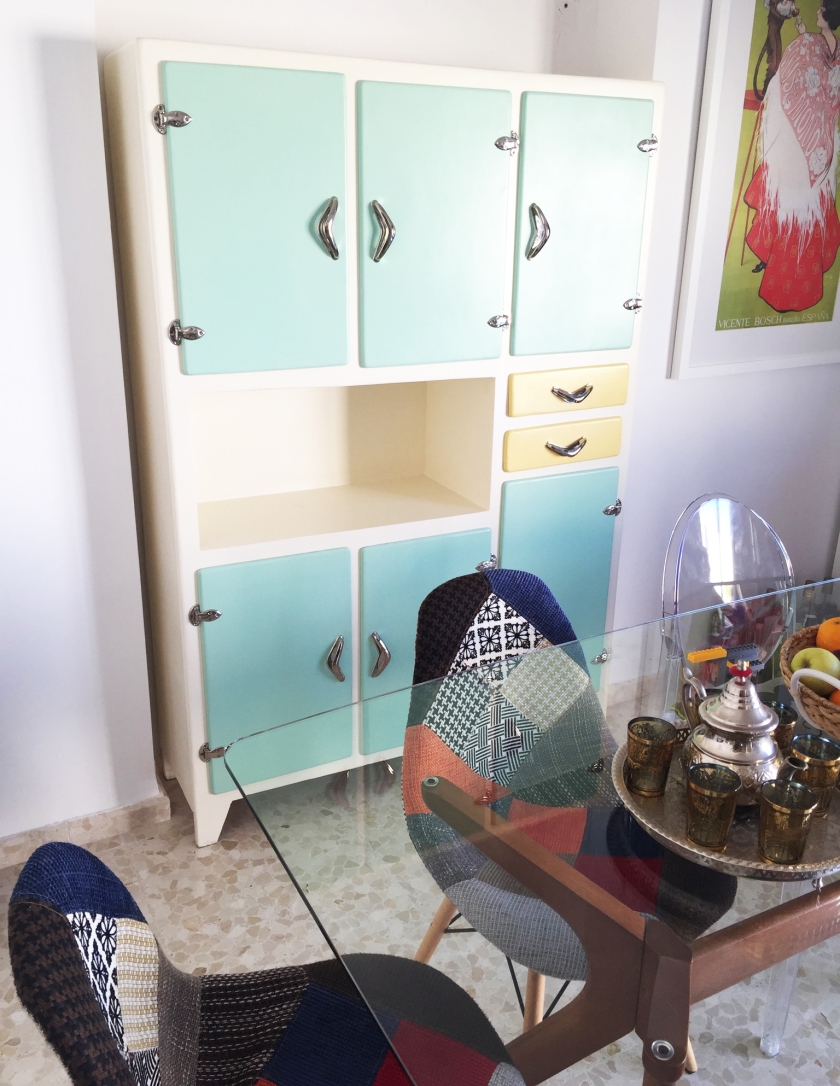

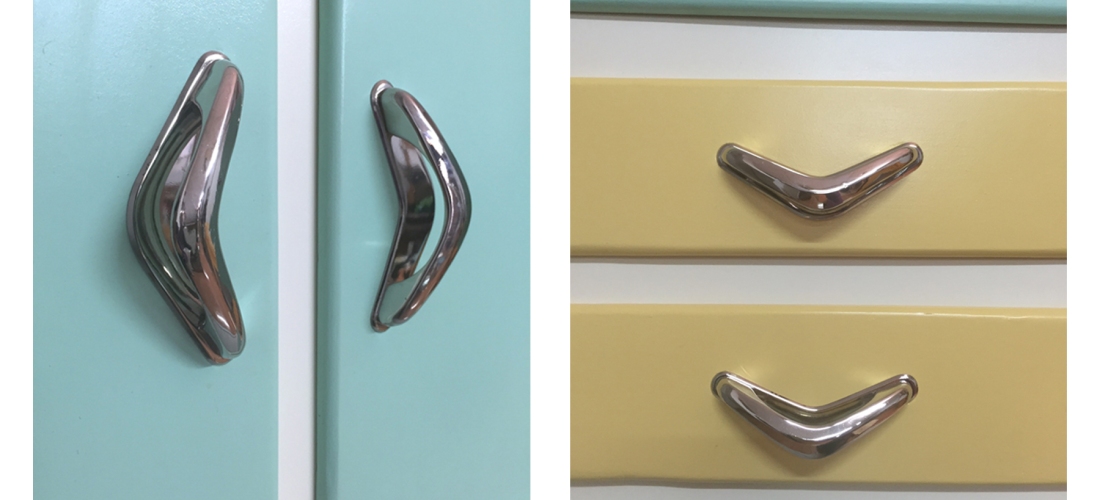




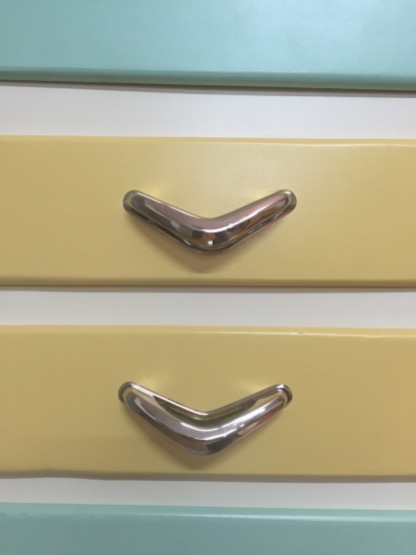



Great piece of work! It was beautiful before but you guys turned it amazing.
Me gustaLe gusta a 1 persona
Thank you! It had indeed a great base, just needed some pampering and a couple of fresh touches to make it more special.
We love it and we are very happy you liked it too!
Me gustaMe gusta